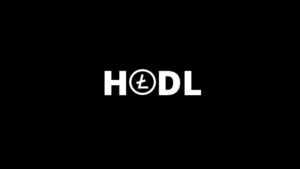The race for CBDC’s is well and truly underway as the European Central Bank (ECB) opens a public consultation about the Digital Euro; even though the decision has already been made.
In Brief
- The European Central Bank opened up a public consultation on the digital euro.
- A Euro CBDC is inevitable, but the ECB’s survey asks which approach it should take.
- In the survey, the ECB asks: should there be intermediaries in a digital Euro?
Euro CBDC?
The European Central Bank President, Christine Lagarde, opened up the matter of a digital euro for public consultation today. One question asked was whether Europeans want a digital euro that does not rely on intermediaries?
“As Europeans are increasingly turning to digital in the ways they spend, save and invest, we should be prepared to issue a digital euro, if needed. I’m also keen to hear your views on it,” she tweeted today, linking to a survey.
Lagarde, who used to run the International Monetary Fund, said in a following video that the survey means that “consumers and Europeans can actually express their preference and tell us whether they would be happy to use a digital euro just in the way they use a euro coin or a euro banknote, knowing that it is central bank money that is available and that they can rely upon.”
“We are still in the review and consideration stage,” she added.
The survey asks respondents to rank their preferences for a digital euro, asking questions like: “What services, functionalities or use cases do you think are feasible and should be considered when developing a digital euro?”
The ECB’s survey doesn’t hold back on its intentions to take on a bigger role in fiscal policy, describing “two approaches we can take to make a digital euro work, one that requires intermediaries to process the payment and one that doesn’t.”
In the first, the ECB describes a digital euro that “has no need for the central bank or an intermediary to be involved in the processing of every single payment.”
This would “feel closer to cash payments, but in digital form – you would be able to use the digital euro even when not connected to the internet, and your privacy and personal data would be better protected.”
In the second approach, intermediaries would record transactions. Notably, the first approach attempts to advertise outside influence from the crypto playbook. But ultimately, the results will fall short of bitcoin’s decentralised gold standard.
Between the lines
This is a tacit admission that the current European financial model is not sufficient for the ECB’s needs, which has now also awoken to the CBDC arms race. While Christine Lagarde opened the Digital Euro to the public for consultation, there’s little reason why the ECB should fall behind other central banks which are doing the same thing.
Fiscal channels clearly are not working and the ECB is looking to quickly grab a piece of the pie before nation states start wondering whether they should take a similar path. After all, it doesn’t take much effort to create a token on Ethereum.
Subscribe to the semi-weekly newsletter for regular insight into bitcoin and crypto. Go on. It’s free.
Did you like the article? Share it!


